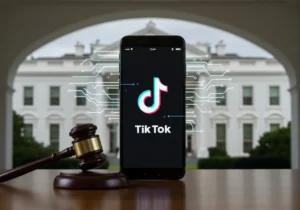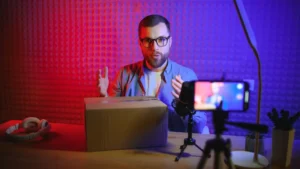As we move deeper into the digital age, the landscape of advertising continues to evolve rapidly. With every technological breakthrough, platform innovation, and change in consumer behavior, digital advertising is constantly being reshaped. In 2025, digital advertising strategies are more complex and nuanced than ever before, and businesses must stay ahead of the curve to remain competitive.
In this blog post, we will explore the key digital advertising trends that are working in 2025, as well as the tactics that are no longer effective. Understanding these trends will help brands optimize their strategies and deliver more impactful campaigns.
What’s Working in Digital Advertising in 2025?
1. Personalization at Scale: Hyper-Targeted Campaigns
Personalization in digital advertising has reached new heights in 2025. With advancements in artificial intelligence (AI), data analytics, and machine learning, brands are now able to create highly personalized ads that resonate with individual consumers. From tailoring product recommendations to delivering dynamic content based on user behavior, personalization is becoming the norm rather than the exception.
Why it’s working: Consumers are no longer satisfied with generic, one-size-fits-all ads. They expect brands to speak to their specific interests and needs. When done right, personalized ads foster deeper connections, improve customer engagement, and lead to higher conversion rates.
For example, e-commerce brands are leveraging AI-powered recommendation engines to show products based on a customer’s browsing history, past purchases, and even their current location.
Key Takeaway: Personalization has gone beyond simply using a customer’s name in an email—it’s about creating tailored experiences that make consumers feel seen and understood.
2. Video Advertising: Short-Form and Interactive Video Content
Video content continues to reign supreme, especially short-form video. Platforms like TikTok, Instagram Reels, and YouTube Shorts have demonstrated how powerful brief video content can be in engaging users. In 2025, video advertising has gone a step further, with interactive video ads allowing users to interact with the content in real-time, influencing their path to purchase.
Why it’s working: People love visual content, and video is the most effective format to capture attention, convey messages, and evoke emotions. Short-form videos, in particular, cater to today’s fast-paced, on-the-go consumer. Interactive video ads, like those that allow viewers to shop directly from the ad or choose their path in the video, increase engagement and provide seamless shopping experiences.
Key Takeaway: Short, interactive videos that encourage user interaction and integrate easily with e-commerce platforms are the future of digital advertising.
3. Voice Search Optimization: A Growing Marketing Channel
As smart speakers like Amazon Alexa, Google Home, and Apple Siri become more integrated into daily life, voice search optimization is becoming a significant component of digital advertising strategies. In 2025, voice-driven advertising is gaining momentum, with brands targeting consumers through voice search and voice-enabled shopping experiences.
Why it’s working: The popularity of voice-activated devices is growing, and people are increasingly relying on them for information, entertainment, and shopping. Ads that are optimized for voice search can connect with consumers in a natural, conversational way, leading to better customer experiences and engagement.
Key Takeaway: Voice search optimization is no longer just about SEO—brands need to optimize content and ad campaigns for voice platforms to remain competitive in the voice-first world.
4. Augmented Reality (AR) and Virtual Reality (VR) Ads
Augmented Reality (AR) and Virtual Reality (VR) technologies have been around for some time, but in 2025, they’ve come into their own in digital advertising. From virtual try-ons for beauty and fashion brands to immersive VR experiences, AR and VR have the ability to transport customers into the brand experience in a way that was previously unimaginable.
Why it’s working: AR and VR offer consumers a way to engage with products in a visceral, interactive manner, increasing the likelihood of purchase. For example, IKEA’s AR app allows users to visualize how furniture will look in their homes before they buy it, which reduces purchase hesitation.
Key Takeaway: As technology becomes more accessible and immersive, brands that invest in AR and VR to enhance their advertising experiences can build deeper connections with consumers.
5. Social Commerce: Shopping Directly from Social Media
Social commerce—the integration of e-commerce directly within social media platforms—is booming in 2025. Platforms like Instagram, Facebook, Pinterest, and TikTok now allow users to shop directly from the app, without ever leaving the platform.
Why it’s working: Consumers are increasingly relying on social media not only for entertainment and connection but also for product discovery and shopping. By allowing users to complete purchases seamlessly within the app, social commerce streamlines the buying process and shortens the customer journey.
Key Takeaway: Social commerce is here to stay. Brands need to optimize their social media profiles and integrate e-commerce features directly into their social platforms to capture the growing number of social shoppers.
What’s Not Working in Digital Advertising in 2025?
1. Intrusive Pop-Up Ads: Annoying and Ineffective
Pop-up ads, which were once a staple of online advertising, are increasingly becoming a thing of the past. Consumers have become more adept at blocking or ignoring these intrusive ads, especially on mobile devices, where pop-ups can be particularly frustrating.
Why it’s not working: Pop-ups disrupt the user experience and often feel like an unwelcome interruption. With the rise of ad blockers and growing frustrations around online clutter, pop-ups are quickly losing their effectiveness.
Key Takeaway: Instead of relying on pop-ups, brands need to focus on providing value through native ads that integrate seamlessly into the user experience.
2. Overuse of Clickbait: Decreasing Trust and Engagement
Clickbait headlines may have been a popular tactic in the past, but in 2025, consumers are becoming more discerning and skeptical. People are tired of sensationalized headlines that don’t deliver on their promises.
Why it’s not working: Clickbait often leads to high bounce rates because users feel misled. It can damage a brand’s reputation and erode trust with an audience. Consumers now value authenticity and transparency more than ever.
Key Takeaway: It’s time to ditch clickbait and focus on creating content that provides genuine value and aligns with audience interests.
3. Overly Complex Ads: Less Is More
In an era of information overload, overly complex ads that bombard the consumer with too much information are failing to make an impact. People want quick, digestible content that is easy to understand and act on.
Why it’s not working: In 2025, consumers have shorter attention spans, and the flood of ads they encounter daily means that only simple, direct, and engaging messages stand out.
Key Takeaway: Simplicity and clarity in ad messaging are key. Instead of overwhelming consumers with information, focus on delivering a clear call-to-action and a straightforward message.
4. Too Much Reliance on Generic Stock Images
Stock images may still be popular in certain areas of digital marketing, but in 2025, authenticity and real-world imagery have taken precedence. Ads filled with generic stock photos feel inauthentic and can come across as disengaging or out of touch with today’s consumers.
Why it’s not working: Consumers want to see real people, real experiences, and genuine moments in advertising. Stock images often fail to resonate with a diverse audience and can feel disconnected from the brand’s message.
Key Takeaway: Embrace user-generated content, behind-the-scenes looks, and authentic imagery to build trust and credibility with your audience.
Conclusion: Navigating the Digital Advertising Landscape in 2025
The world of digital advertising in 2025 is fast-paced, highly personalized, and increasingly interactive. By leveraging new technologies like AI, AR, VR, and voice search optimization, businesses can stay ahead of the curve and create ads that engage, convert, and resonate with their target audiences.
On the flip side, advertisers need to move away from outdated tactics like intrusive pop-ups, clickbait, and generic stock imagery to maintain consumer trust and relevance in a crowded marketplace.
By staying focused on innovation, personalization, and authenticity, brands can craft powerful advertising strategies that will drive success in 2025 and beyond.





